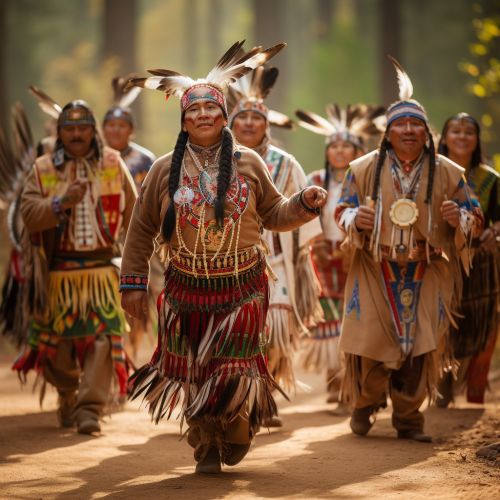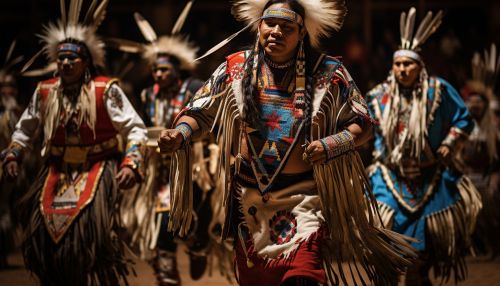Native Americans in the United States
Overview
Native Americans, also known as American Indians, Indigenous Americans and other terms, are the indigenous peoples of the United States, excluding Hawaii and territories of the United States, and other minor islands. Native Americans are composed of numerous, distinct tribes, bands, and ethnic groups, many of which survive as intact political communities. The term "Native American" has been adopted by major newspapers and some academic groups, but has not traditionally included Native Hawaiians or certain Alaskan Natives, such as Aleut, Yup'ik, or Inuit peoples.


History
The history of Native Americans in the United States began in ancient times tens of thousands of years ago with the settlement of the Americas by the Paleo-Indians. Anthropologists and archeologists have identified and studied a wide variety of cultures that existed during this era. Their subsequent contact with Europeans had a profound impact on their history.
Pre-Columbian Era
The Pre-Columbian Era incorporates all period subdivisions in the history and prehistory of the Americas before the appearance of significant European influences on the American continents. The era is marked by the Pre-Columbian cultures, classified according to cultural periods including the Paleo-Indian, Archaic period, Woodland period, and Mississippian period.
European Contact
The European contact with the Native Americans began in the 15th century when Christopher Columbus arrived on the continent. The contact was marked by the Columbian exchange, which introduced European goods and diseases, which had a profound effect on Native American societies.
Colonization Era
During the early 17th century, European settlers in North America turned to Native Americans for warfare and trade. Native Americans were also often at war with neighboring tribes and allied with Europeans in their colonial wars. At the same time, however, many natives and settlers came to depend on each other.
Removal and Resistance
In the 19th century, the incessant westward expansion of the United States incrementally compelled large numbers of Native Americans to resettle further west, often by force, almost always reluctantly. Native Americans suffered high fatalities from the contact with infectious Eurasian diseases, to which they had no acquired immunity. Epidemics after European contact caused the greatest loss of life for indigenous populations.
Culture
Native American cultures are not normally included in characterizations of advanced stone age cultures as "Neolithic," which is a category that more often includes only the cultures in Eurasia, Africa, and other regions. The archaeological periods used are the classifications of archaeological periods and cultures established in Gordon Willey and Philip Phillips' 1958 book Method and Theory in American Archaeology.
Social Organization
Traditional Native American cultures tended to be egalitarian, with some level of gender equality. In many Native American cultures, there were gender roles for both men and women. Men were often responsible for hunting, warfare, and interacting with outsiders, whether traders or invaders. Women, on the other hand, managed the internal operations of the community. They usually owned the family's housing and household goods, engaged in agricultural food production and gathering of foodstuffs, and reared the children.
Religion
Religion among Native Americans covers an extremely wide range of beliefs and practices. It can be categorized into traditional beliefs, which can be traced back to the earliest ancestors, and the adoption of Christianity, brought by European missionaries.
Modern Issues
Modern issues facing Native Americans today include but are not limited to: healthcare, education, unemployment, discrimination, and the preservation of native cultures.
See Also
Native American Tribes Native American Languages Native American Religion
